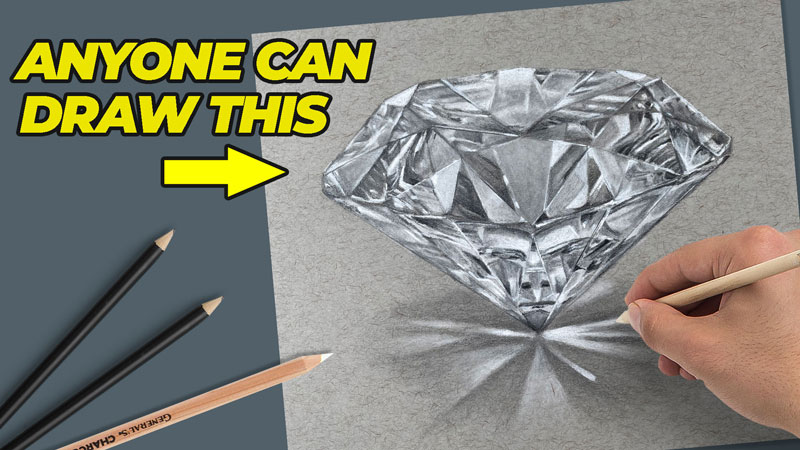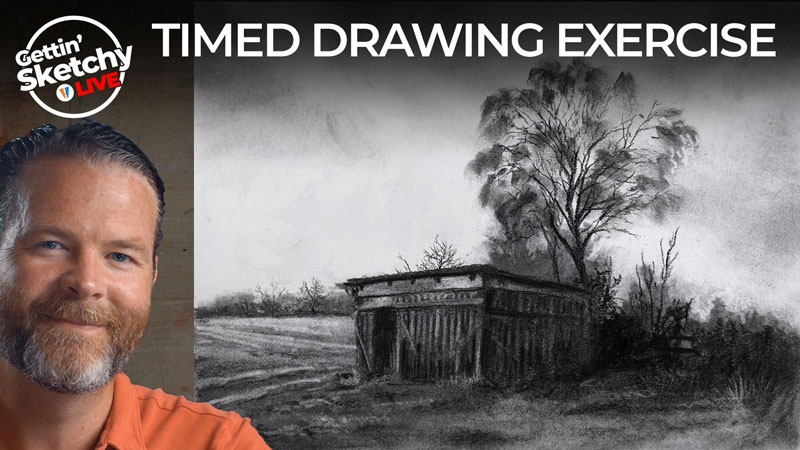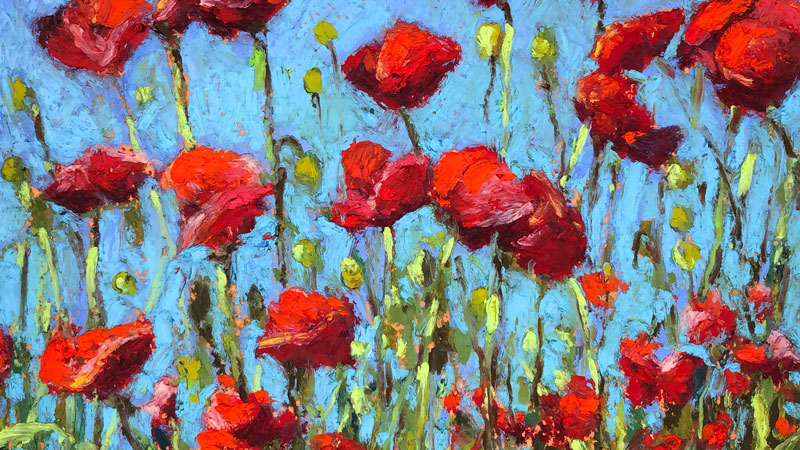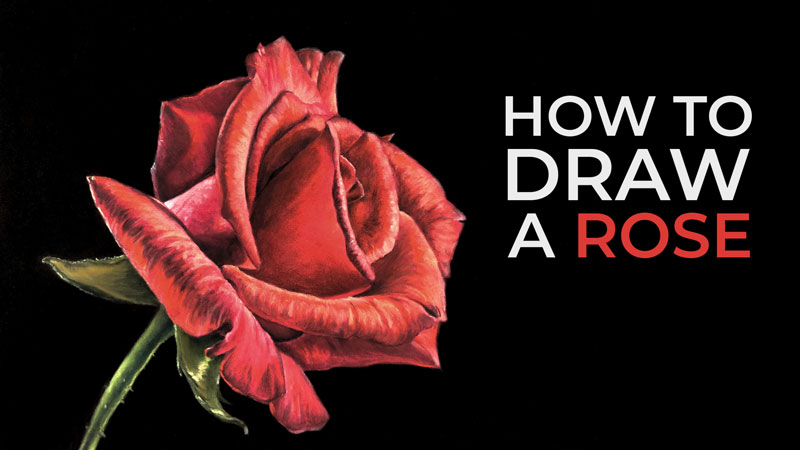Creating Drawings on Black Paper
We’re all familiar with drawing on white paper with a dark medium. It’s the way most of us create a drawing. It’s comfortable and intuitive. Plus, there’s an endless number of “white” paper tones out there. But in this lesson, we’ll look at a paper that is often overlooked and it may just change the way you approach creating a drawing. That’s right – I’m taking about black paper.
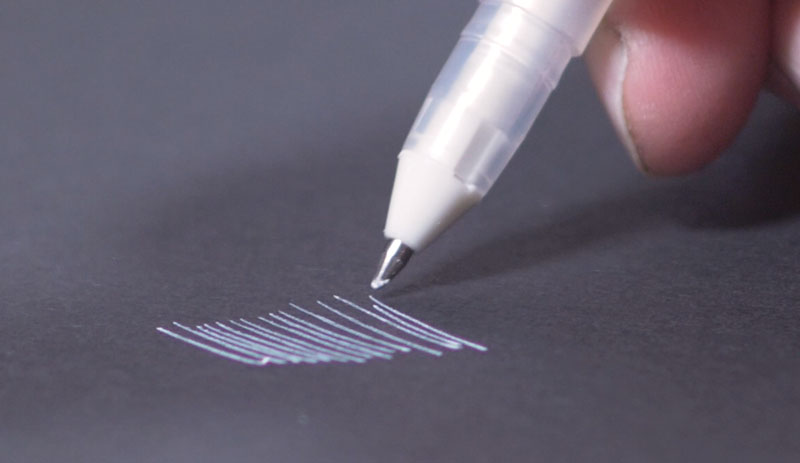
Advantages of Drawing on Black Paper
The first advantage to working on black paper is that black paper provides high contrast – mostly high contrast in value. Value is the darkness or lightness of a color and it’s incredibly important.
When we have a dark value right next to a light value we have high contrast. Contrast makes our drawings and paintings pop. Black paper gives us nice rich blacks so that when we apply lighter values to it, the values contrast against each other. If we were working on white paper, we would have to add lots of dark material in order to create the same type of contrast or pop.
Another advantage of working on black paper is a perception of brighter colors. Since we have such a high contrast in value the colors that we add to the surface are going to naturally appear brighter. These colors might not actually be brighter but they’ll be perceived as being brighter simply because of contrast. So whenever you want your colors to stand out or pop then black paper might be a good solution.
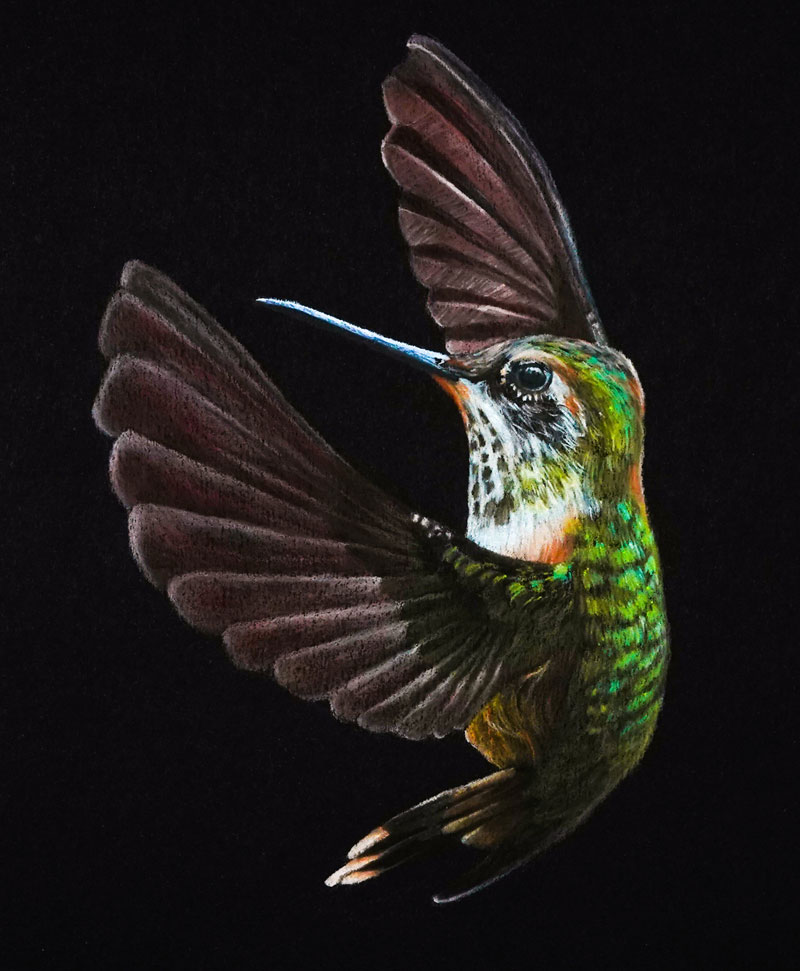
(Image above is from the course, “3 Little Birds with Colored Pencils”.)
Another advantage of working on black paper is that we get nice rich shadows. Sometimes when we work with traditional materials like graphite and charcoal on white paper, it can be difficult to push the values as dark as they need to be in the areas of shadow. These darker values are the values that we actually see in reality – those really dark, juicy shadows. But when we work on dark paper, we already have some of those dark values in place – so it’s very easy to create those natural dark shadows.
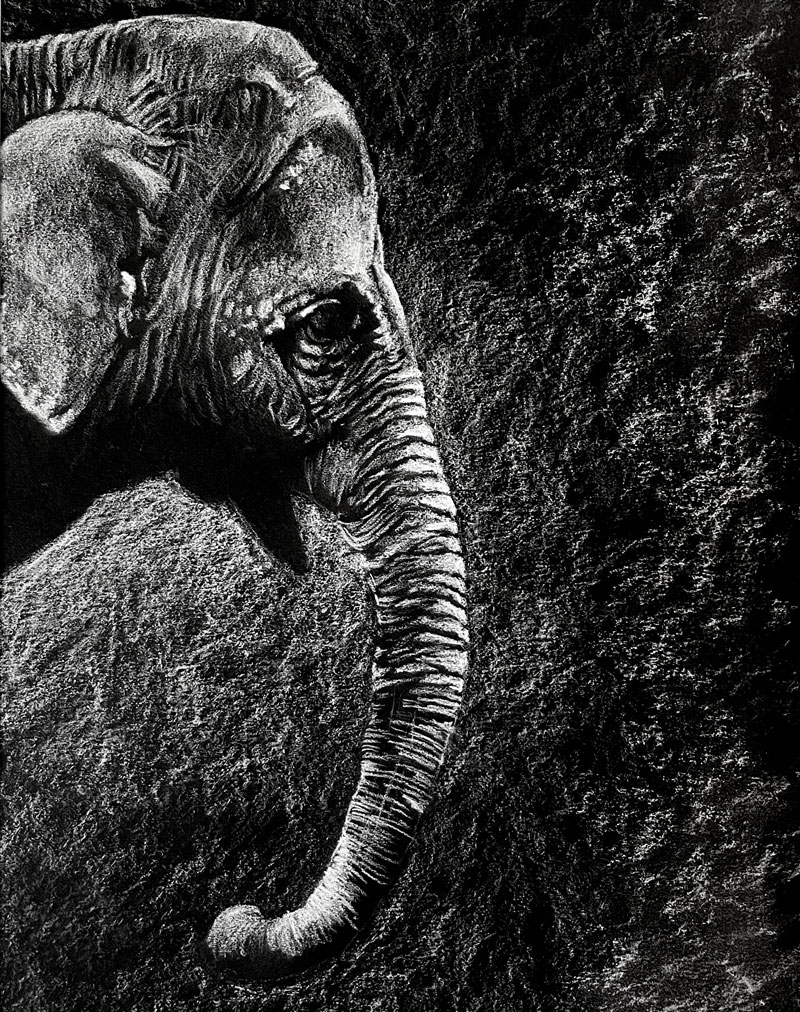
A fourth advantage to working on black paper is that it may just be faster. In any drawing or painting we create, we should work to create a full range of value. This means that we may have to put a lot of dark material on the surface when working on white paper. This obviously can be time-consuming. But when we work on black paper, we can create a scene that looks complete while applying less material to the surface.
See also: All About Drawing Papers
Perhaps we’re working with a scene that has a small amount of light or high contrast. In these situations, just a small amount of material on the surface will suffice. The reverse of this isn’t true – when we work on white paper, we still find that we need to apply a lot of dark material in order to create a similar illusion.
Disadvantages to Drawing on Black Paper
Every drawing surface has its advantages and disadvantages, so let’s take a look at a few of the disadvantages to drawing on black paper.
The biggest disadvantage to drawing on black paper is that you have to think in reverse. We’re all accustomed to drawing on white paper with dark material. This means that we’re used to applying dark material in areas of middle value and shadows. But when we work on black paper we have to add the lighter values and leave alone some of the darker values. This can be a challenging thought reversal if you’re doing this for the first time. But with just a little practice, it becomes easier.
Another disadvantage to drawing on black paper is that you’re limited in the mediums that you can use. Logically, we wouldn’t work on black paper with graphite, black charcoal or traditional pen and ink. But even though we’re limited to the mediums that we can use – thankfully, these mediums work extremely well with black paper and create that pop that we’re after.
Suggested Mediums for Drawing on Black Paper
Colored Pencils – Colored pencils work exceptionally well with black paper. Because of that color contrast that we discussed earlier, color pencils stand out on black paper.
Soft Pastels – Soft pastel is another drawing medium that works exceptionally well on black paper. Like colored pencils, soft pastels create strong contrast – but cover a little easier.
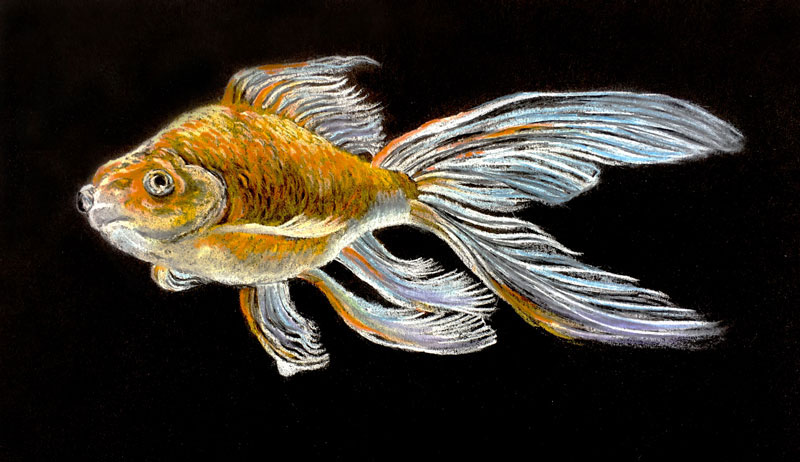
Oil Pastels – Even though oil pastels share the “pastel” nomenclature with their softer counterparts, they are a different medium all-together. Oil pastels feature an oil-based binder which never dries completely. They are thick and sticky instead of brittle and chalky like soft pastels. But for the same reasons as the previously mentioned mediums – they work great on black paper.
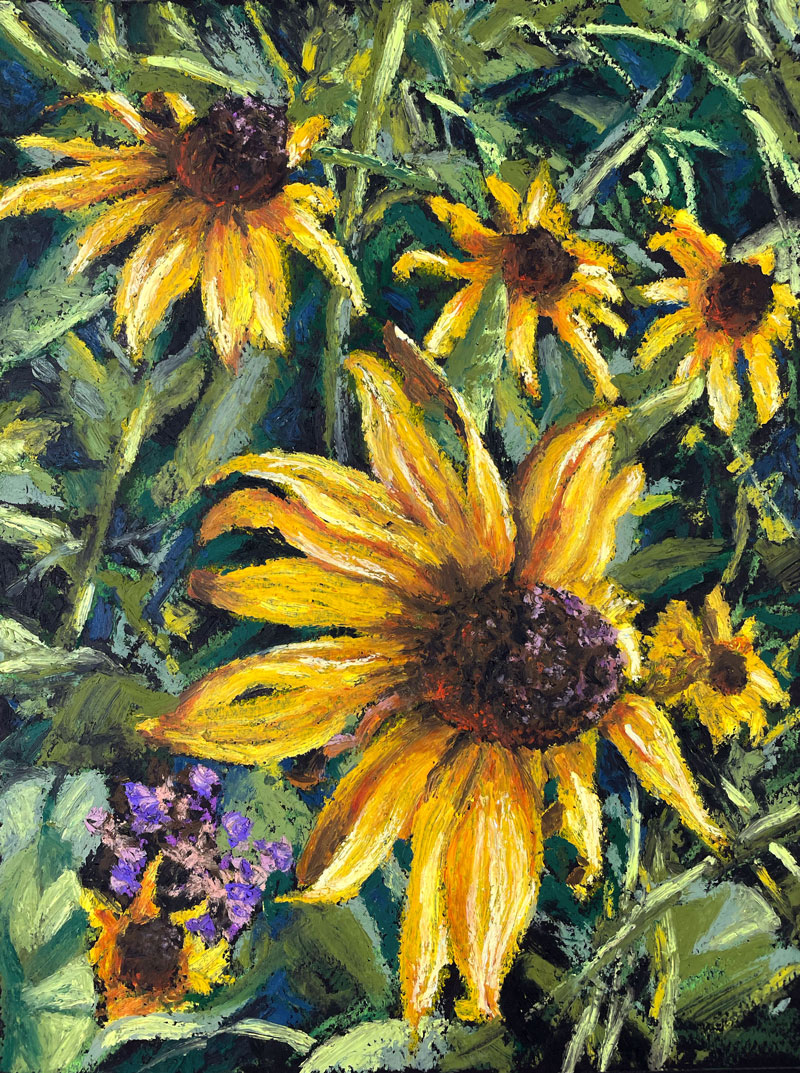
Image above is from the course, “The Oil Pastel Course”
White Charcoal – As the name suggests, white charcoal is a chalky and powdery medium similar to traditional black charcoal. Even though it’s called “white charcoal” – it’s not truly charcoal, but a manufactured pigmented medium that behaves in a similar manner as charcoal.
White Ink – Pigmented inks also work well on black paper. You can use traditional ink techniques like hatching, cross-hatching, and stippling, but instead of using these techniques for the darker values – you use them for the areas of highlight and lighter value.
Subjects and Scenes for Drawing on Black Paper
You may find greater success drawing on black paper with a few specific subjects.
You may consider composing a scene with one intense light or strong contrast. Only light the areas that you wish to draw, leaving the rest of the scene dark. This can be accomplished using one soft spotlight on your subject. This will lead to stronger, easily-recognizable areas of lighter value with dark shadows.
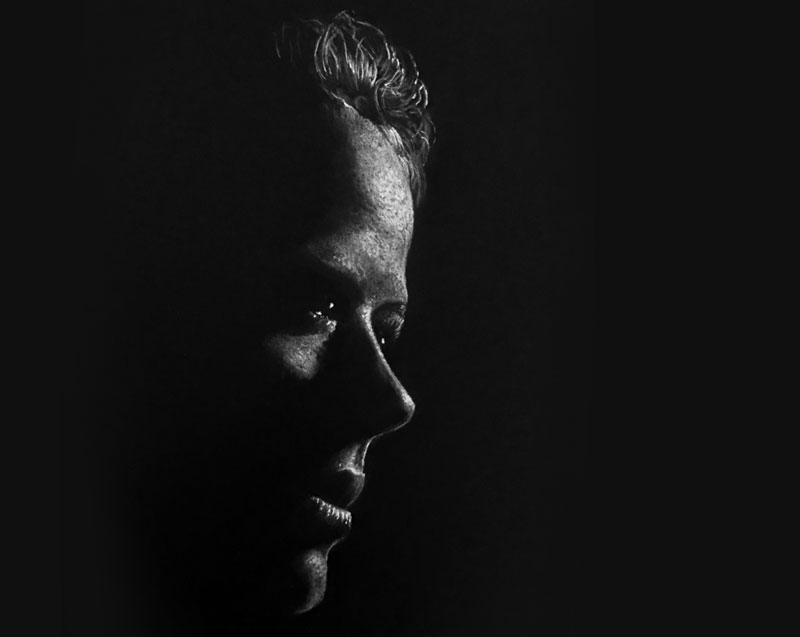
Brighter or colorful subjects, set against a dark or black background, will also make great subjects. When you start with high contrast on your subjects and then use a medium that accentuates high contrast, then you’re setting yourself up for success.
Specific Black Paper Brands
There are a ton of paper options out there and many of them are high quality surfaces. I’ll share a few of my picks with you here.
Canson Mi-Teintes Pastel Paper – This paper is extremely versatile. Featuring two distinctly different surface textures, this paper is great for applying soft pastels, oil pastels, and colored pencils. Both sides of the paper are suitable for drawing, but each side does feature a heavier tooth.
Strathmore Artagain – This paper is smoother than Mi-Teintes paper making it suitable for white charcoal, colored pencils, and white ink.
Black Ingres Paper – This paper is nearly identical to charcoal paper, its biggest difference being color. Featuring a laid pattern as its tooth, this paper is best suited for white charcoal but it could also be used with colored pencils and soft pastels.
Let’s Wrap It Up
So when was the last time you created a drawing on black paper? Maybe it’s time to revisit this wonderful surface or start a new drawing adventure. Either way, black paper provides some fantastic benefits but also a few drawbacks. It’s not right for every subject or every medium but it may be right for your next project.
If so, join over 36,000 others that receive our newsletter with new drawing and painting lessons. Plus, check out three of our course videos and ebooks for free.


